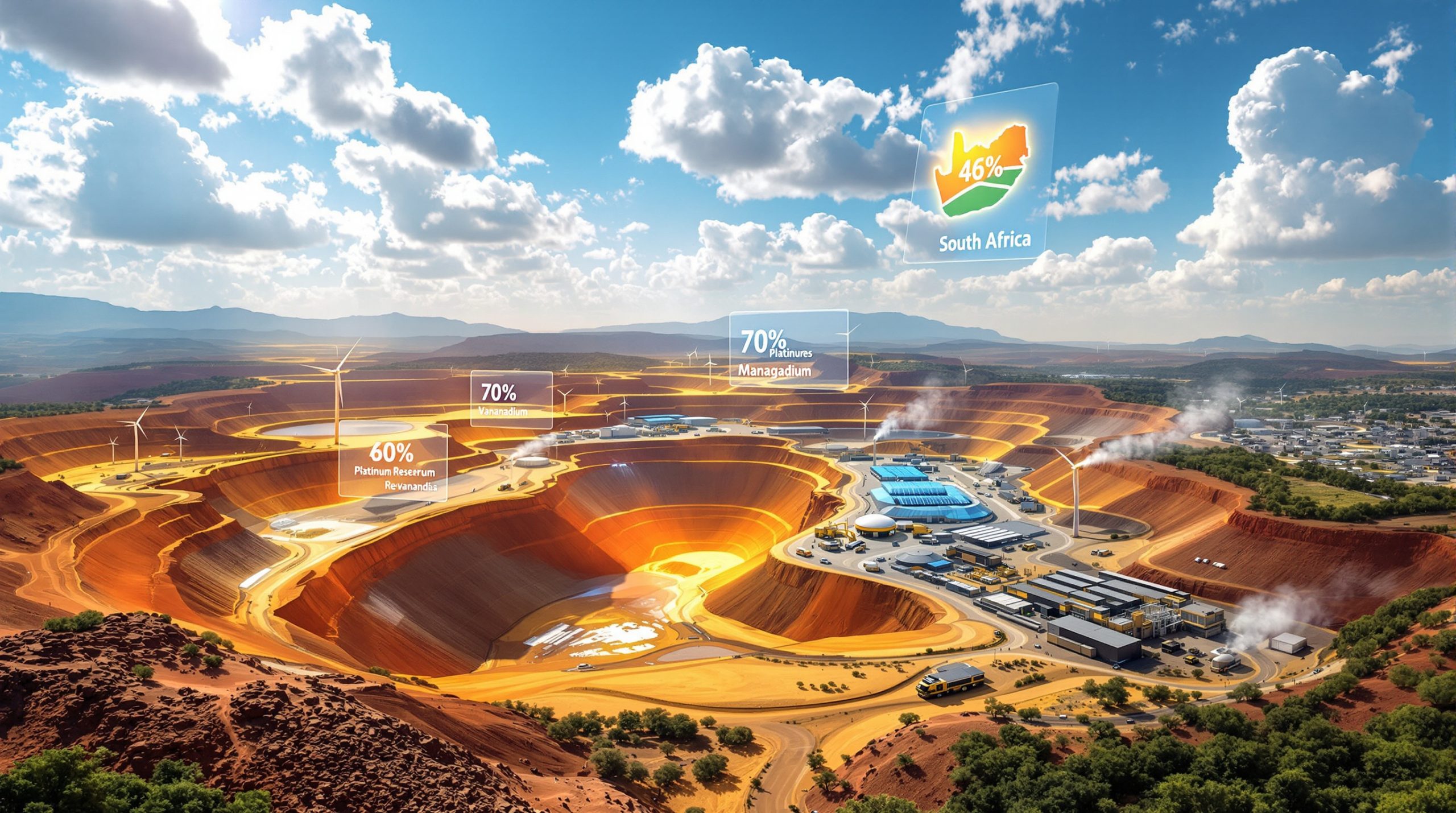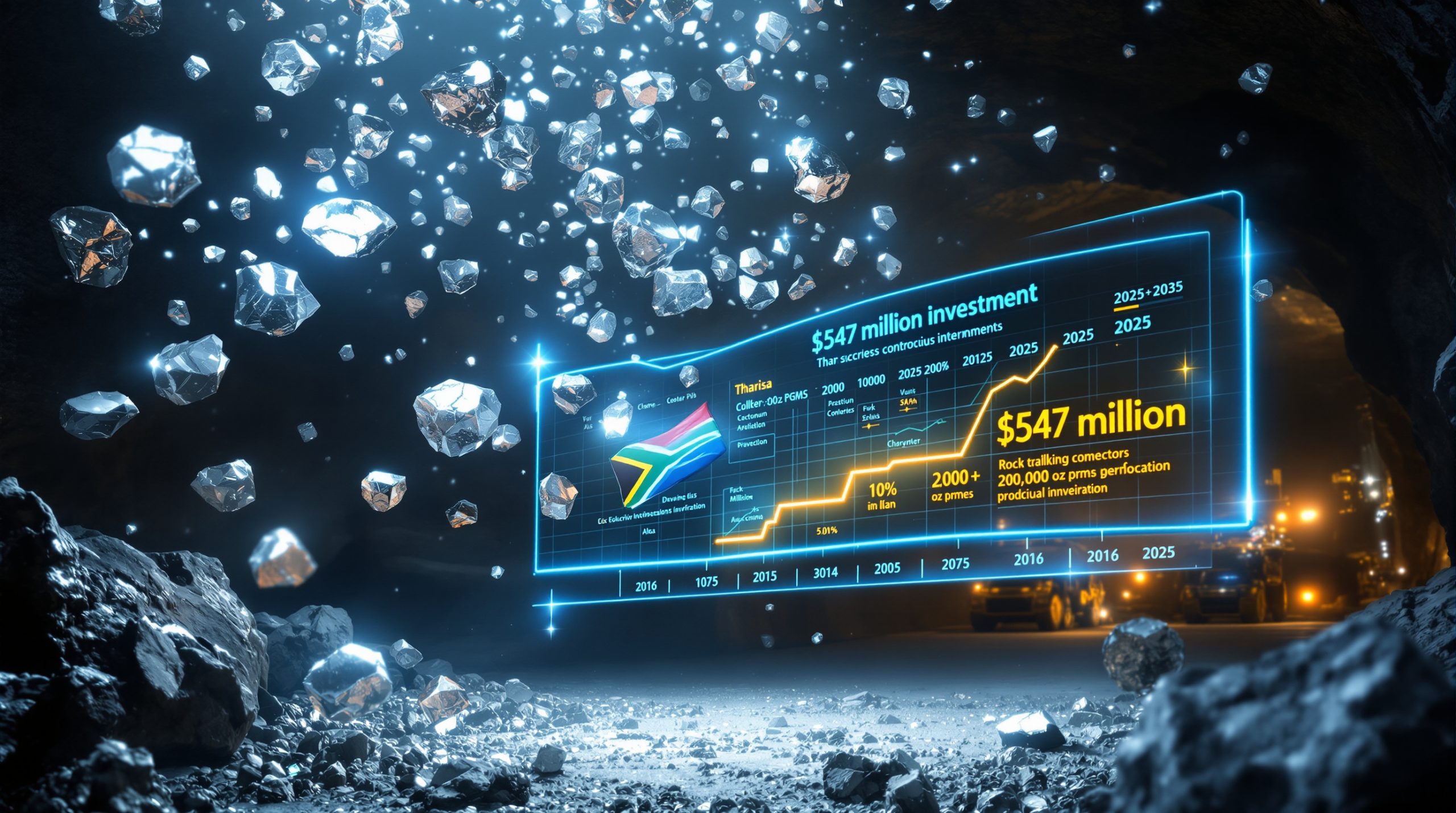What Are China's New Rare Earth Export Controls and Why Do They Matter?
China's latest expansion of rare earth export controls represents a significant shift in global supply chain dynamics, with far-reaching implications for industries dependent on these critical materials. The December 2024 restrictions added five heavy rare earth elements to China's controlled export list, escalating tensions in an already fragmented global market. Furthermore, these measures demonstrate the importance of critical minerals energy security in the current geopolitical landscape.
Overview of the December 2024 Export Restrictions
The Chinese Ministry of Commerce announced sweeping new controls affecting holmium, erbium, thulium, europium, and ytterbium. These elements join previously controlled materials including samarium, gadolinium, terbium, dysprosium, yttrium, scandium, and lutetium, which were restricted in April 2024. The comprehensive nature of these controls reflects China's strategic positioning in the global rare earth market, where the country maintains approximately 70% of global mining production and 90% of refining capacity.
Heavy rare earth elements carry particular significance due to their scarcity and specialised applications. Holmium finds critical use in laser systems and nuclear control applications, while erbium enables fibre optic communications infrastructure. Thulium powers portable medical X-ray devices, europium creates security features in currency and LED displays, and ytterbium drives advanced laser technology and solar cell efficiency.
The implementation timeline created immediate market disruptions, with controls taking effect across different phases throughout 2025. This staggered approach allowed some companies to secure final shipments while forcing others to rapidly restructure their supply chains.
Scope of Technology and Equipment Restrictions
Beyond raw materials, China's expanded rare earth export controls now encompass refining technology and equipment exports, requiring licences for previously unrestricted manufacturing tools. This technological dimension represents a strategic escalation, targeting the knowledge transfer that enables rare earth processing capabilities outside China.
Processing equipment restrictions affect:
• Separation and purification machinery
• Specialised refining technologies
• Automation systems and control software
• Technical documentation and operational protocols
The equipment controls create particular challenges for companies attempting to establish non-Chinese processing capabilities, as specialised rare earth separation technology has traditionally been dominated by Chinese manufacturers. Consequently, this has accelerated European efforts to develop their own critical raw materials facility initiatives.
How Do China's Extraterritorial Provisions Change Global Supply Chains?
China's new export controls extend beyond traditional territorial boundaries through extraterritorial provisions that affect global manufacturing operations. Foreign companies utilising Chinese rare earth inputs now face licensing requirements regardless of their geographic location, fundamentally altering international supply chain relationships.
The Extraterritorial Control Framework
The expanded regulations stipulate that export control licences will be required by foreign companies producing products utilising Chinese equipment or materials. This provision creates a web of compliance obligations extending far beyond China's borders, affecting manufacturers who may have minimal direct business relationships with Chinese suppliers.
Companies must now navigate complex documentation requirements proving the origin and composition of their rare earth inputs. The extraterritorial reach means that a European manufacturer using Chinese-origin europium in LED production requires Chinese government approval, even if the europium was processed through multiple intermediaries.
Third-Party Manufacturing Impact Assessment
Non-Chinese companies utilising Chinese rare earth materials face unprecedented compliance burdens. Manufacturing operations previously considered outside Chinese regulatory jurisdiction now require detailed supply chain documentation and potential licensing approval.
The compliance framework demands:
• Complete traceability of rare earth element origins
• Documentation of processing locations and methods
• Technology source verification for all equipment
• Regular compliance auditing and reporting
These requirements create substantial administrative costs and operational delays, particularly affecting small and medium-sized manufacturers lacking dedicated compliance infrastructure.
Which Industries Face the Greatest Disruption from These Controls?
The expanded export controls create varying degrees of disruption across industries, with some sectors facing existential supply chain challenges while others adapt through alternative sourcing strategies.
Electric Vehicle and Battery Manufacturing
Electric vehicle production relies heavily on rare earth permanent magnets, with typical EVs containing 1-2 kilograms of rare earth content primarily in traction motors. The controlled elements, particularly terbium and dysprosium, serve as essential additives enabling magnets to operate at the high temperatures required for automotive applications.
Neodymium-iron-boron (NdFeB) magnets incorporating controlled rare earth elements can constitute 3-10% of high-performance magnet formulations. These additions allow magnets to maintain strength and coercivity at elevated operating temperatures, critical for EV motor efficiency and durability.
Battery manufacturing faces secondary impacts through rare earth compounds used in battery management systems and electronic controls. While lithium-ion batteries don't directly require large quantities of rare earth elements, the supporting electronic infrastructure depends heavily on controlled materials.
Defence and Aerospace Applications
Military applications present the most critical supply chain vulnerabilities, as many defence systems require specific rare earth elements with limited substitution possibilities. Erbium enables military fibre optic communications systems, while holmium and ytterbium power laser guidance systems and electronic warfare equipment.
Precision-guided munitions rely on rare earth elements for:
• Navigation and guidance systems
• Electronic countermeasure devices
• Communication equipment
• Optical targeting systems
The national security implications have prompted government responses including strategic stockpiling programmes and accelerated domestic processing capability development. For instance, Australia's critical minerals reserve has become a key component of regional security planning.
Consumer Electronics and Renewable Energy
Wind turbine manufacturing faces significant challenges, as modern wind turbines require 200-600 kilograms of rare earth permanent magnets per megawatt of generation capacity. Direct-drive generators, increasingly popular for offshore applications, depend heavily on controlled rare earth elements for their powerful permanent magnet systems.
Consumer electronics manufacturing encounters disruptions through LED phosphor production, where europium creates the red phosphors essential for display technology. Smartphone manufacturers also rely on rare earth elements for miniaturised speakers, vibration motors, and camera focusing systems.
Solar panel production faces indirect impacts through inverter systems and tracking mechanisms that utilise rare earth permanent magnets for optimal panel positioning and power conversion.
What Are the Geopolitical Motivations Behind China's Export Controls?
China's timing and scope of export controls reflect complex geopolitical calculations extending beyond simple economic considerations. The restrictions serve multiple strategic objectives within broader international relations frameworks.
Strategic Leverage in Trade Negotiations
Historical precedent demonstrates China's willingness to utilise rare earth exports as diplomatic tools. The 2010 restriction of rare earth exports to Japan during territorial disputes resulted in 500-750% price increases between 2010-2011, illustrating the economic leverage these materials provide.
With President Donald Trump's return to office in January 2025, trade tensions have intensified through maintained tariffs and expanded technology transfer restrictions. China's rare earth controls provide countervailing pressure in ongoing bilateral negotiations, creating mutual vulnerabilities that complicate trade policy decisions. Indeed, Trump's critical minerals order has further complicated these dynamics.
The December 2024 timing coincides with increased U.S. efforts to establish domestic rare earth processing capabilities, suggesting strategic coordination to maximise diplomatic leverage while domestic alternatives remain underdeveloped.
Domestic Industrial Policy Objectives
Export controls serve China's domestic economic transformation goals by encouraging foreign investment in Chinese processing facilities rather than export of raw materials. By restricting technology and equipment exports, China aims to maintain processing advantages while capturing higher value-added manufacturing activities.
The policy framework encourages:
• Foreign direct investment in Chinese rare earth facilities
• Technology partnerships favouring Chinese companies
• Downstream manufacturing relocating to China
• Dependency on Chinese technical expertise
This approach mirrors successful strategies in other critical material sectors where China has consolidated global processing capabilities whilst maintaining supply chain dominance.
How Are Global Markets Responding to the New Restrictions?
Market reactions to China's expanded rare earth export controls have created immediate price volatility and longer-term structural adjustments as companies scramble to secure alternative supplies.
Price Volatility and Market Reactions
Initial market responses showed substantial price increases across controlled rare earth oxides, with some elements experiencing 30-50% price appreciation within weeks of the announcement. However, precise pricing data remains challenging to verify due to the specialised nature of rare earth trading markets.
Market participants report increased price volatility and reduced liquidity in spot markets as buyers attempt to secure medium-term supply contracts. The specialised nature of rare earth trading, which occurs primarily through direct negotiations rather than standardised exchanges, complicates price discovery and market transparency.
Trading activity has shifted toward longer-term contracts as buyers seek supply security rather than optimal pricing. This behavioural change reflects underlying concerns about availability rather than temporary price fluctuations. Meanwhile, regions like Greenland critical minerals are gaining increased attention as alternative sources.
Alternative Supplier Development
North American rare earth processing capacity represents the primary alternative to Chinese supply chains. The Mountain Pass facility in California produced approximately 43,000 metric tons of rare earth concentrate in 2023, representing roughly 15% of global production. However, processing capacity for separated rare earth oxides remains concentrated in China.
Australian operations through Lynas Rare Earths provide additional supply diversity, producing 12,000-15,000 metric tons per year of rare earth products from the Mount Weld mine and Malaysian processing facility. European Union initiatives focus on recycling and urban mining technologies to reduce primary supply dependencies.
Investment flows have accelerated toward non-Chinese processing projects, with typical construction timelines of 3-5 years and capital requirements of $150-500 million for commercial-scale separation facilities.
What Are the Long-Term Supply Chain Implications?
China's export controls catalyse fundamental restructuring of global rare earth supply chains, with implications extending decades into the future.
Diversification Strategies Being Implemented
Companies are implementing comprehensive supply chain diversification strategies involving geographic distribution, technological alternatives, and strategic stockpiling. The approach requires balancing supply security against cost optimisation, as non-Chinese sources typically command premium pricing.
Strategic stockpiling has emerged as a critical risk mitigation tool, with both governments and corporations building inventory buffers. The U.S. National Defence Stockpile provides a framework for strategic material reserves, whilst private companies establish operational stockpiles covering 3-12 months of consumption.
Vertical integration strategies involve companies investing directly in mining and processing operations rather than relying on market purchases. This approach provides supply security but requires substantial capital commitments and operational expertise outside core business areas.
Technology Development for Supply Security
Recycling and urban mining represent promising long-term supply sources, as currently less than 1% of rare earth elements undergo recycling globally. Electronic waste contains substantial rare earth concentrations, often exceeding natural ore grades found in traditional mining operations.
Research and development investment has accelerated toward rare earth-free technologies and improved efficiency applications. Permanent magnet designs utilising reduced rare earth content, alternative motor technologies, and substitution materials receive increased funding and development priority.
Advanced separation technologies offer potential efficiency improvements and reduced environmental impacts compared to traditional solvent extraction methods. These innovations could enable economic processing of lower-grade ores and recycled materials previously considered uneconomical.
How Can Companies Navigate the New Regulatory Environment?
Successfully managing China's expanded rare earth export controls requires comprehensive regulatory compliance frameworks and strategic sourcing adaptations.
Compliance Framework Development
Effective compliance programmes must address both Chinese export licensing requirements and domestic regulatory obligations. Companies require detailed documentation systems tracking rare earth element origins, processing locations, and end-use applications.
Licence application procedures involve substantial documentation requirements including:
• Complete supply chain mapping and verification
• End-use certification and monitoring systems
• Technical specifications and quality standards
• Regular compliance reporting and auditing protocols
Legal risk assessment protocols must evaluate both direct Chinese supply relationships and indirect exposure through suppliers and sub-contractors. The complexity of modern supply chains creates multiple potential compliance failure points requiring systematic identification and mitigation. According to Washington Post analysis, these controls represent a new form of economic coercion that companies must navigate carefully.
Strategic Sourcing Recommendations
Companies with Defence Priorities & Allocations System (DPAS) status gain preferential treatment in U.S. supply allocation during shortages. DPAS provides mandatory acceptance of rated orders by suppliers and enhanced supply chain visibility for national defence applications.
Key Insight: Under DPAS authorisation, rated purchase orders receive priority treatment from participating suppliers, helping secure critical materials during supply disruptions and trade control uncertainties.
Supplier diversification strategies should emphasise geographic distribution and technology independence from Chinese sources. Companies like Ucore Rare Metals have structured operations around North American equipment suppliers, utilising positive displacement pumps, control systems, and automation technology sourced within allied nations.
Contract renegotiation strategies must address force majeure provisions, alternative sourcing requirements, and price adjustment mechanisms reflecting supply chain volatility. Long-term agreements provide stability but require flexibility mechanisms addressing regulatory changes and market disruptions.
What Does This Mean for Future Rare Earth Market Dynamics?
China's export controls accelerate fundamental transitions in rare earth market structure, with implications extending throughout the global critical materials ecosystem.
Projected Market Structure Changes
The traditional Chinese-dominated supply chain model faces systematic dismantling as consumers and governments prioritise supply security over cost optimisation. This transition requires massive infrastructure investment and technological development spanning multiple decades.
Investment requirements for achieving supply chain independence approach $50-100 billion globally across mining, processing, and recycling infrastructure. These capital demands exceed individual company capabilities, necessitating government partnerships and international coordination.
Timeline projections for meaningful supply chain diversification extend 10-15 years for full-scale alternative processing capacity. Interim solutions rely on strategic stockpiling, efficiency improvements, and diplomatic management of Chinese supply relationships.
Innovation Acceleration in Critical Materials
Research funding for alternative materials and rare earth-free technologies has increased substantially following supply chain disruptions. Government programmes and private investment target breakthrough technologies enabling reduced rare earth consumption across key applications.
Patent activity in rare earth alternatives and efficiency technologies shows accelerating growth, with particular emphasis on:
• Advanced permanent magnet designs with reduced rare earth content
• Electric motor technologies utilising alternative magnetic materials
• Solid-state lighting systems with reduced phosphor requirements
• Battery chemistries minimising rare earth dependencies
Collaboration between governments and private sector has intensified through public-private partnerships, research consortiums, and technology sharing agreements. International cooperation extends across allied nations seeking collective supply chain resilience.
Policy Responses from Major Economies
The United States has updated critical materials strategy emphasising domestic processing capacity and strategic partnerships with allied nations. The Infrastructure Investment and Jobs Act provides funding for rare earth processing facilities and recycling technologies.
European Union Raw Materials Act implementation establishes frameworks for strategic stockpiling and supply chain diversification. The legislation emphasises recycling targets, alternative material development, and reduced dependency on single-source suppliers.
Japan-Australia rare earth partnerships demonstrate bilateral cooperation models addressing supply chain vulnerabilities through complementary strengths. Australian mining capabilities combined with Japanese processing technology create alternative supply chains bypassing Chinese dependencies. As highlighted by Reuters reporting, these partnerships are becoming increasingly vital for global supply security.
Investment Disclaimer: Rare earth market investments involve substantial risks including price volatility, regulatory changes, and geopolitical tensions. Supply chain disruptions can create both opportunities and significant losses. Investors should conduct thorough due diligence and consider professional advice before making investment decisions in critical materials sectors.
The transformation of global rare earth supply chains represents one of the most significant shifts in critical materials markets since the 1970s oil crises. Success in navigating these changes will determine competitive positions across industries dependent on these essential materials for technological advancement and national security applications.
Looking to Capitalise on Critical Minerals Investment Opportunities?
Discovery Alert's proprietary Discovery IQ model delivers real-time alerts on significant critical minerals discoveries across the ASX, instantly empowering subscribers to identify actionable opportunities ahead of the broader market. Understand why historic discoveries can generate substantial returns by exploring Discovery Alert's dedicated discoveries page, showcasing proven examples of exceptional market outcomes, and begin your 30-day free trial today to secure your market-leading advantage.




